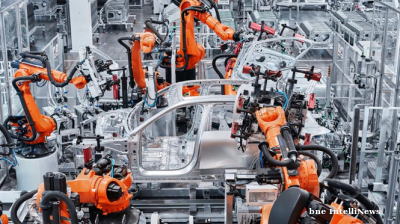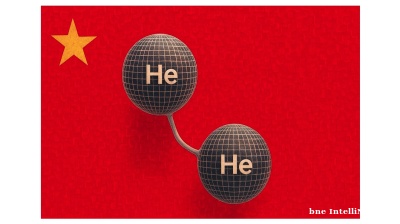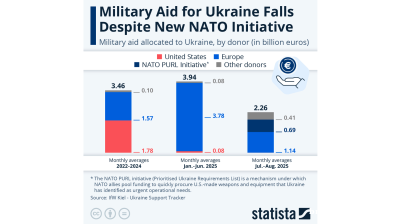Russia’s top university Moscow State University (MGU) has announced it has developed one of the world’s “second or third most powerful” supercomputers, a claim that has been met with scepticism by industry experts.
In the same week, Russian President Vladimir Putin unveiled Russia’s first high-capacity gas turbine – a piece of equipment for which Russia has been totally dependent on imports until now.
As reported by bne IntelliNews, Russia is scrambling to catch up with the rest of the world in the technology race following the imposition of Western technology sanctions, but is trailing far behind. It is at least two generations behind in precision tools and has been forced to import most of its machinery.
The Kremlin has launched an effort to boost productivity to keep the economy competitive but remains far behind in things like the use of robots, as it is more focused on maintaining full employment than improving efficiency. In the microchip race, the US is approaching four-nanometre chips; the smallest Chinese chips are seven nanometres, and Russia is stuck at 90 nanometres.
Supercomputer
MGU’s supercomputer is unlikely to be made of Russian components. Public procurement data reveals the machine was likely constructed using components sourced from partners in China, The Bell reports, potentially circumventing Western sanctions.
The university is reported to have acquired parts from a Chinese intermediary on AliExpress for RUB2.8bn ($28mn) and at a fraction of what a supercomputer of this calibre would typically cost.
The components in question, while listed under non-existent brands, appear to be rebranded US firm Nvidia products, according to those familiar with the situation. If true, this would suggest that MGU bypassed restrictions on exports of advanced technology to Russia. Typically, a supercomputer of this power would cost closer to $280mn, according to industry standards, The Bell reports.
The MGU computer would not be the first super powerful computer in Russia: in the boom years of the noughties the state-owned retain banking giant Sberbank reportedly spent over $1bn on a supercooled computer to handle all its data storage and transactions, and digitised its 11-time zone banking business into a single country-wide platform. Sberbank has been at the forefront of Russia’s attempts to embrace modern technology and digitise its economy.
In the financial sector, Russia has been a leader in digital innovation, introducing ideas like sending your phone an SMS each time you make a withdrawal from an ATM. Likewise, the tax system has been similarly radically digitised with a new tax service IT system introduced by former head of the tax service and now Prime Minister Mikhail Mishustin, which revolutionised Russia’s tax system.
Gas turbine
Also on October 10, Putin unveiled the first domestic produced high-capacity gas turbine at the Udarnaya power station in southern Russia that will increase the plant’s output to 560 MW from 454 MW.
Russia is heavily dependent on gas-fired power stations to provide the country with electricity, but during the last three decades it has never been able to match the efficiency of turbines made in the West, which it has overwhelmingly imported from makers such as Siemens, GE and Alstom.
There were several attempts to break the foreign companies’ de facto monopoly on gas turbines in the last years, led by Silovye Mashiny (Power Machines) owned by metals tycoon Alexei Mordashov, who would like to see his company become the Siemens of Russia.
Despite their best efforts, until now Russian-made turbines suffered from the absence of an advanced precision tools industry and could never achieve more than two thirds of the efficiencies of German-made turbines.
The development of the new GTD-110M turbine at Udarnaya has been led by state-owned technology corporate Rostec in cooperation with Silovye Mashiny, which built an alternative based on the same technology, and claims to be lighter and more compact than the German analogues, and comparable in terms of performance.
If the boasts are confirmed then the development of a powerful and efficient Russian-made gas turbine would be a major advance. Russia is currently developing a new energy strategy to expand its domestic electricity production, as it anticipates shortages in the coming decades if no new generation capacity is added.
"Previously, high-capacity gas turbines were supplied only from abroad, so today's event is doubly important for the Russian energy industry," said Alexander Pronin, head of Technopromexport, the Rostec subsidiary that built the power station, reports Reuters.
The new plan calls for the construction of at least 25 new nuclear power plants (NPPs) by 2045, but the withdrawal of Siemens and the other equipment suppliers has added a heavy burden to the energy sector, as the government will be unable to maintain or expand its gas generated power capacity by 50 GW over the same period. The advent of a Russian-made efficient gas turbine could largely solve that problem.
As of 2023, gas-fired power generation accounted for 45-50% of the total and NPPs for another 19-20%. By 2045, Russia's energy strategy plans to shift this balance, with a greater emphasis on nuclear power and a continued, though slightly reduced, role for natural gas: NPPs 25-30% and gas 40-45%.
Putin’s daughter
Adding to the intrigue is the involvement of Vladimir Putin’s second daughter, Katerina Tikhonova, who oversees Russia’s artificial intelligence (AI) research at MGU. The supercomputer is restricted for use by university staff, and its main focus will be AI research – a field in which Tikhonova plays a significant role.
Her AI Institute at MGU is known for working on dual-use technologies, blending civilian and military applications, including projects such as video analysis, public opinion influence and neurorehabilitation techniques.
The MGU supercomputer highlights once again the poor supervision of Western technology sanctions that are deemed to have largely failed, partly due to poor supervision, but partly as similar export restrictions on technology for China have backfired and lead to innovation and rapid progress of Chinese technology, according to a report by the Federal Reserve Bank of New York.
Tech

China increasing its lead in robot technology use
China is consolidating its dominance in the global industrial robotics market, accounting for 41% of the world’s operational robot stock and more than half of all new installations in 2024, according to the International Federation of Robots.

The Iranian inventor that invented the floating shoes, has now built a propeller-less propulsion system ideal for flying taxis
Mohsen Bahmani is an Iranian-born mechanical engineer and a man with a dream. When he was just 17 years old, he made a pair of floating shoes that allow you to walk on water. Now he has built a propulsion system ideal for flying taxis.
_(1).jpg)
OpenAI to invest up to $25bn in Argentina under Milei incentive scheme
Artificial intelligence giant OpenAI and energy company Sur Energy have signed a letter of intent to develop a data centre hub in Argentina requiring investment of up to $25bn.

Helium was China's rare earth metals Achilles' heel
China has a devastating tool in its escalating trade war with the US: rare earth metals (REMs). Last week, Beijing announced new restrictive export controls on the export of anything with even a smidgen of Chinese-produced REMs.




